Learn everything about studio monitors, including their definition, history, types, uses, features to look for, and a whole lot more!
Listening to music has become an integral part of our life for a while now. But what about music production? Has it become an integral part of our life? Well, for a few of us, the answer should be a big YES!
Now, what do I mean by ‘A Few of Us’? It means we- the musicians, music producers, or maybe the future sensations who’re just starting out. Whether you’re in this category or a music lover, we’ve designed this article to serve everyone’s purpose equally. So, keep reading!
Now, people know that the current industry has some of the best speakers and stereo speakers around in 2020 to choose from to feed our soul by listening to music with maybe some of our coolest buddies out there or maybe to have peace of mind while listening alone.
But, in this case, you’ve searched for studio monitors, probably because you want to take your sound production to the next level; therefore, you’re expecting a proper guideline or maybe because you’re just curious about the term studio monitors, or perhaps interested to know the connection between studio monitors and music production. Either case, you’ll know a lot more than that.
- How To Calibrate Studio Monitors?
- How To Clean Studio Monitors?
- The Yamaha HS8 Studio Monitor Review
What We Will Learn?
What Are Studio Monitors?
History Behind Studio Monitors
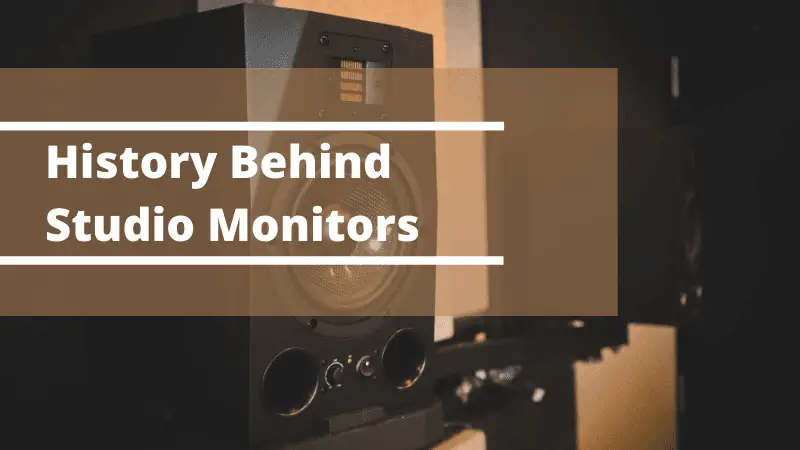
Because of the accurate audio reproduction intensity, in the early 1920s and 1930s, studio monitors were only used to check for the interference of noise and other technical issues with songs, and audio early monitors were known to be basic loudspeakers.
At the start of the recording industry, around the 1920s, studio monitors were basically used just to check for noise interference and clear technical problems. The true high-end loudspeakers came from the movie production industry. But, now, they are used for the artistic adjudication of any music. Usually, most speakers are not able to identify every instrument played behind any song with the most accurate details.
But, studio monitors are capable of capturing everything literally and providing an accurate evaluation of any song.
In the 1940s and 1950s, various studios around the USA and UK started replacing usual speakers with high-tech studio monitors. By the 1940s, the first quality loudspeaker developed solely as a studio monitor was the Altec Lansing Duplex 604 in 1944. The Altec Lansing 604 became the industry standard over the next 25 years, with over eleven model modifications.
The Altecs were then replaced by another notable brand – JBL. Within 25 years of the first studio monitor, it was obvious that a studio monitor had many other purposes rather than just identifying problems and noise reduction. In the late 1960s, JBL introduced two monitors which helped secure them pre-eminence in the industry.
After that, until today, studio monitors are an integral part of any professional recording studio or maybe for a home studio as well.
At the end of the 1980s, it was evident that a studio monitor was a must part of any studio. A design introduced in 1978 ironically for the home audio market, became the monitor of choice for many studios in the 1980s. So, the manufacturers started putting state-of-the-art tech onto their products and creating masterpieces with better sound quality and also better functions.
The 1980s were also filled with the growth of soft-dome monitors. By the 2000s, there was a focus on “translation” meaning that engineers tended to choose monitors less for accuracy but for their ability to translate to a variety of systems (car radios, boom boxes, etc.), and now what we find in studios is the final form of a 100-year-old technology that has become an absolute part of the music industry over the span of time.
Different Types Of Studio Monitors
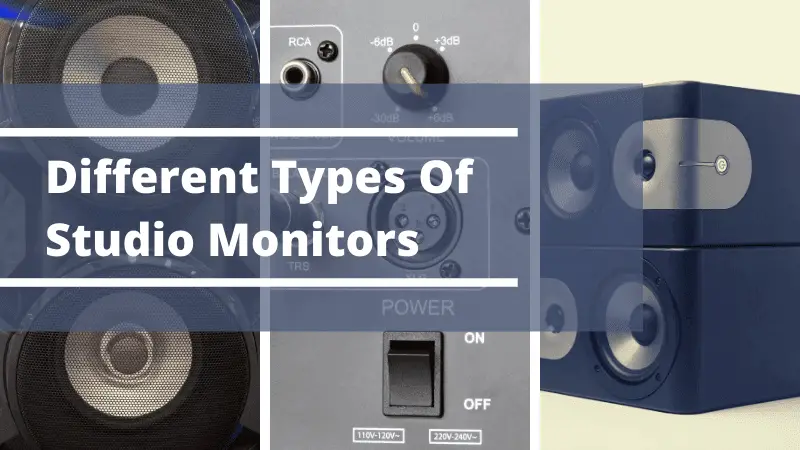
There are many types of studio monitors, and each serves a different purpose. Let’s go through the type to understand why there are so many types. In the current market, you can find about 5 types of studio monitors. Let’s name them first:
- Active studio monitors
- Passive studio monitors
- Near-field studio monitors
- Mid-field studio monitors
- Far-field studio monitors
Now, let’s dive deep into each type.
Active Studio Monitors
Active studio monitors are considered the most powerful ones, and it’s the most popular ones as well. The word “active” means the speaker cabinet features an inbuilt power amplifier, so you need to connect the device to a line source with volume control, such as a dedicated controller or an audio interface. Because of that, studio monitors usually produce a punchier, more accurate, and more dynamic response.
View Best Selling Active Studio Monitors On Amazon
They use an active crossover network, and they have built-in power amplifiers that handle the frequency range. This means active monitors are far more compact, have all the necessary things you need on a studio monitor, and of course, you won’t require any external amp to drive. In the case of studio monitors, most are active. Along with the most expensive studio monitors are always active.
These features make active studio monitors optimal function-based speakers with fewer wiring problems. Although these monitors come at a high price, you’ll get the most value.
Most of them are bi-amplified that individually power the different frequency drivers and produce the best result. Note here that drivers are basically two types as follows:
Woofers
These are drivers that capture the low-end frequencies. If you’re a hip-hop and electro music producer, you definitely need subwoofers: a subwoofer is a specially designed monitor, placed on the floor (usually under the desk and in between your two monitors) and responsible for outputting. Because in these genres, the beat drop is very important. So, to ensure the best beat drop and also the best bass, you definitely need this driver.

Tweeters
The 2nd type of driver is the tweeter. Tweeters have again three sub-types:
● Soft some
● Ribbon
● Metal

These three sub-types provide and add different elements to the music. Tweeters usually produce high-pitched sounds and add versatility to the songs. Usually, treble is managed through tweeters.
Bi-amplified studio monitors are the most popular ones because of their various features. Don’t forget to check out the most versatile, great value-for-money bi-amplified active studio monitor of the modern age- The Yamaha HS8, one of the best in the business!
Yamaha HS8 (Expert Recommended):
View On Amazon
Read Full Review
Passive Studio Monitors
Passive monitors don’t have built-in amplifiers and don’t have a crossover. So, this means you have to buy each separately and set it up yourself. External amplifiers sometimes do a great job when it comes to proper audio production.
View Best Selling Passive Studio Monitors On Amazon
The best part is each piece apart costs less than active monitors, and you get the chance to go creative with your setup.
Avantone Pro Passive Mixcube is our no.1 choice when it comes to passive studio monitors.
Avantone Pro Mixcube (Expert Recommended):
Near-Field Studio Monitors
Near-field studio monitors are basically monitors which have a smaller range. For smaller studios and small recording rooms, near-field monitors are the best options as you would need better reception than surround sound. It also features two drivers: a woofer and a tweeter, best for a 1 to 2-meter listening distance.
View Best Selling Near-Field Studio Monitors On Amazon
You can definitely take the Edifier R2000DB and PreSonus Eris E-3.5-3.5″ under consideration as your next near-field studio monitor for your home studio on different budgets.
Mid-Field Studio Monitors
Along with a woofer and tweeter, the basic feature of a mid-field studio monitor is- it has a dedicated mid-range driver, ideal for a 3 to 4-meter listening distance.
Far-Field Studio Monitors
Far-field studio monitors have a wider range. These monitors provide a range that is ideal for bigger recording rooms and studios. They offer a surround sound that cancels out any other noise.
Uses Of Studio Monitors
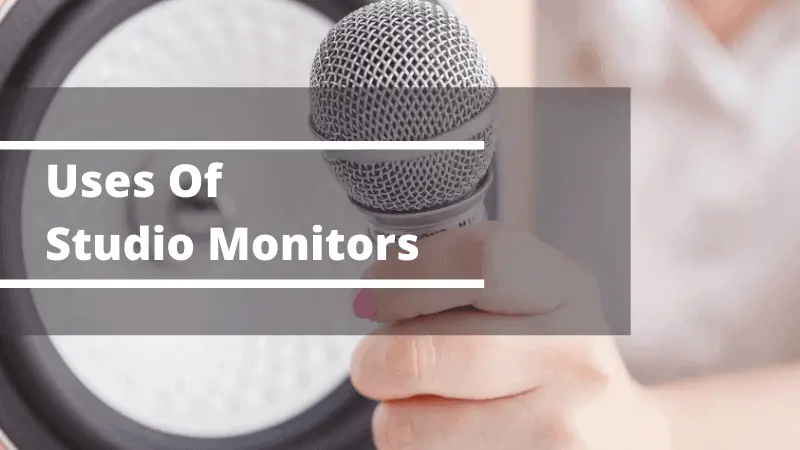
Just like any other speaker, a studio monitor also has the same job. Its output is for music and audio. But still, why do people prefer studio monitors over normal speakers? Studio monitors are designed for monitoring the sound of a mix in studio environments and are, therefore, intended to represent the authentic sound of the audio.
Think about a very high-quality speaker that you use at home for listening to songs or, say, your home theatre system. They provide great sound, don’t they?
Now, multiply that sound quality by several times. That’s how much more accurate a studio monitor is when it comes to playing the exact original sound. Studio monitors have usually powered speakers with power amplifiers built into the cabinet.
So, when a sound engineer is working on a music track at his studio, it’s important and evident for him to understand and feel every single beat accurately. No high-quality speaker can ensure that better than a studio monitor. Monitors are used by almost all professional producers and audio engineers.
That’s the use of a studio monitor. To listen to accurate sounds and provide the best quality result out of studio/audio production. That is why studio monitors are so important. The flat response assists engineers when mixing so that they do not add additional bass, treble, or other frequencies. Since studio monitors are used for the production aspects of audio products, it is safe to say that a regular speaker is used for the consumption of audio products.
From the perspective of a listener, this point may be debatable. That’s because standard speakers are designed for listening. The sounds they produce are often boosted and colorized, making them listener-friendly. However, with studio monitors, the quality of output remains the same regardless of the type of speaker a listener uses.
Difference Between Hi-Fi Speakers And Studio Monitors
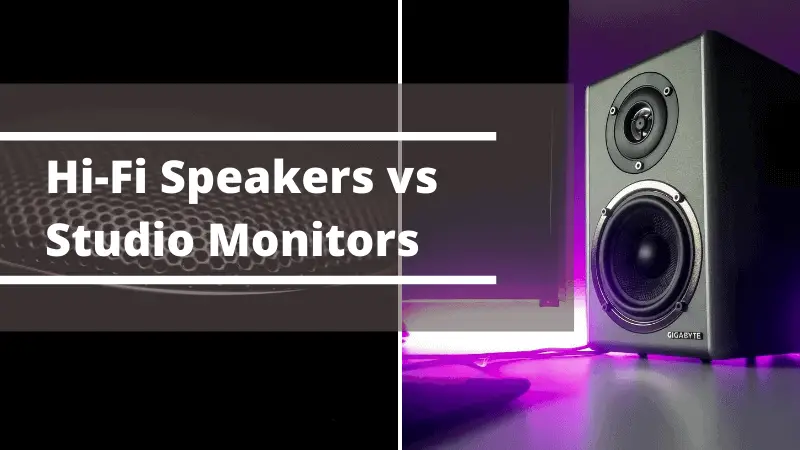
It’s often thought that you can replace a studio monitor with a hi-fi speaker and vice versa. But that idea is not right. You can’t do that because these two types of speakers are made to serve two different purposes. Also, studio monitors are made in a more physically robust manner than home hi-fi loudspeakers; whereas home hi-fi loudspeakers often only have to reproduce.
You can’t really replace one with another. That’s why they are so different from each other. While Hi-Fi Speakers are designed to project sounds throughout a room, all that matters is the listeners’ subjective impression. Most music consumers, therefore, prefer speakers that seem to enhance their listening experience. Studio monitors have been crafted with short distances in mind.
Powered speakers may be useful for a living room, den, or outside area, studio monitors are great for bedrooms, studios, and smaller areas—as they prevent these rooms from enhancing, or reducing, each sound’s true frequency. We can talk about several differences. Let’s point out three major differences between hi-fi speakers and studio monitors.
- Different types of usage: Both have very different usage. They serve two different purposes. Hi-fi speakers use for the home audio system and are made in a way that they produce high-end audio that would soothe your ears when you’re listening to songs or watching a cinema on your home tv. But a studio monitor lives to find out problems in a perfect tune or a song. So, it’s supposed to sound pretty bad in a way because it looks for sonic technical issues. Wouldn’t it make sense to use the same kind of hi-fi speakers for monitoring and mixing? Yet recording professionals prefer dedicated monitor speakers for studio work. Here’s why!
- Projection difference: Hi-fi speakers have this specific need to have a very surround sound. But on the other hand, studio monitors don’t really focus on surround sound. So, the projection of the two speakers is very different according to their purpose.
- Sound difference: Hi-fi speakers don’t have amplifiers. To amp the sound, you need to add an extra amplifier to it. But studio monitors, the active ones, have amplifiers built-in and utilize a crossover system. So, the sound itself is different in both speakers. But how could listening to a perfect recording tell you anything about a speaker’s ability to reveal flaws? As a result, you may end up buying the pair of speakers that sounds the most impressive.
Can You Use HiFi Speakers As Studio Monitors?
Yes, you can use HiFi speakers as studio monitors, but they may not provide the most accurate sound for your studio setups. Home speakers are typically not designed for studio use, so they may not produce the same quality of sound as studio monitors – kinda covered in the points above, but studio monitors are designed to have a flat, precise sound for near-field use.
However, if you’re just starting out and don’t have the budget for professional studio monitors, HiFi speakers can be a good option. Just be aware that you may need to upgrade to studio monitors eventually if you want the most accurate sound possible for your studio setups.
Studio Monitor vs. Studio Headphone
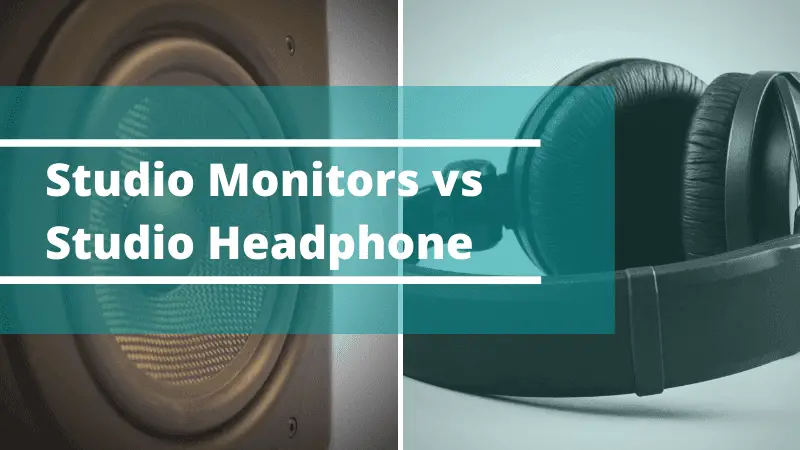
The comparison is not an ideal one but as people often ask this, let’s get to know this as well.
People use headphones to cancel out the outside noises. But to be honest, the room acoustics are good for creating better quality sounds.
The room acoustics provide many aggressive sound waves and help you to find out serious issues in audio. Whereas headphones provide a much smoother experience. The main difference between a studio monitor and a headphone is the attention to precision. Studio monitors are built to produce a very flat frequency so that sound engineers can hear tiny details in a mix. A mix could sound great in headphones, but horrible on monitors.
So, for different types of audio, you need both of them. But studio monitors are preferred. Because monitors are designed for monitoring the sound of a mix in studio environments and are, therefore, intended to represent the authentic sound of the audio. Still, you can give it a shot to the headphones. Yes, you can, with practice. We have heard many excellent mixes made with a cheap pair of PC speakers and a good set of headphones. Headphones are like magnifying glasses for your sound.
Now, let’s take a look at some of the important features to look for in a studio monitor.
Do I Need An Amplifier For My Studio Monitors?
If you’re wondering whether or not you need an amplifier for your studio monitors, the answer depends on a few factors. If you’re using active monitors, they likely have a built-in amplifier so that you won’t need an external one. However, if you’re using passive speakers, you will need an amplifier to power them.
The same goes for if you’re using an audio interface with passive speakers – you’ll need an amplifier to boost the signal. Ultimately, it comes down to what type of setup you have and what type of monitors you’re using. If you’re unsure, it’s always best to consult with a professional or do some research to figure out what will work best for your home studio.
Important Features To Look For In Studio Monitors
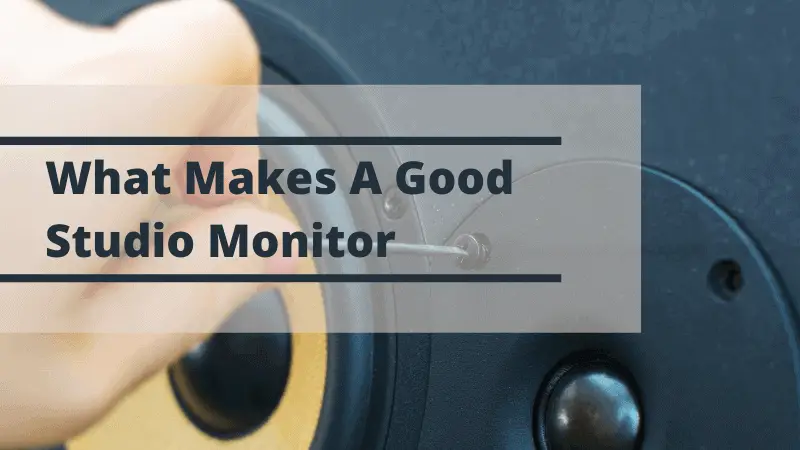
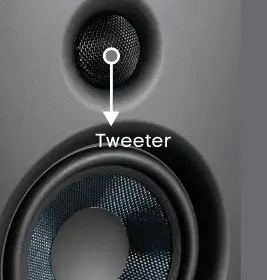
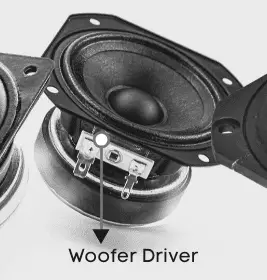

Pros & Cons Of Studio Monitors
It’s generally favorable to use studio monitors if you’re recording, mixing, or mastering. Now, let’s have a look at some pros and cons of a studio monitor.
Pros:
- Finds out problems in audio, it’s a good idea to monitor your mixes on as many different playback systems as possible to ensure the mix sounds good across all listening environments.
- Helps to sort out technical problems
- Adds an artistic vibe to determine the perfection of any audio.
- Provides output almost as close to the original production sound. Musicians, producers, and engineers want something different. They need to hear the plain truth. They want speakers that add no extra sugar and hide no imperfections.
- Adjusts the sound according to the room acoustics
For these reasons, studio monitors are great for critical listening, recording, radio studios, and even television. Studio monitors are also the best option for mixing, editing and mastering audio to a professional degree.
Cons:
- Expensive setup
- Complicated
- Sometimes not suitable for home use
Studio monitors tend to be geared toward professionals, they may not be accessible to regular music lovers.
How To Choose The Best Studio Monitor?
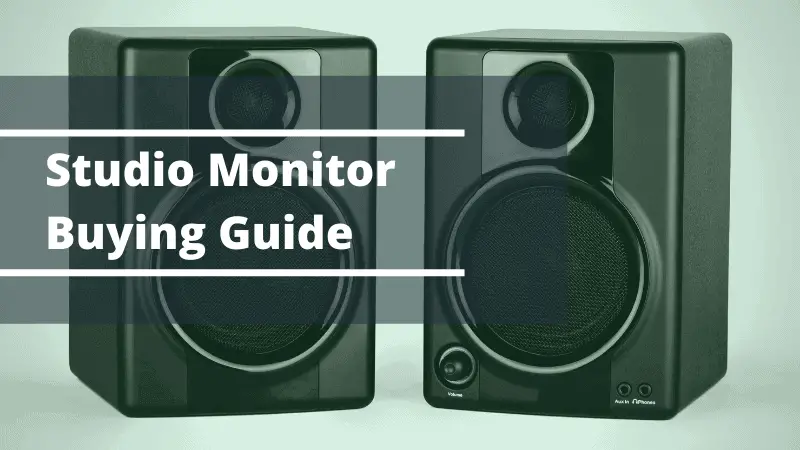
There are many things to consider before buying the best studio monitor for yourself. Determining the perfect pair of studio monitors for your studio can make for a difficult choice. Let’s talk about them briefly.
Active Or Passive Monitors
There are also “Active” and “Passive” monitors. Passive monitors require you to plug in your speaker with an appropriate amplifier and crossover. An active monitor has everything already included inside (the amplifier is built into the monitor), so all you have to do is plug it into the source.
The choice depends totally on your preferences. Active speakers offer some advantages. Being active, studio monitors feature multiple power amps within single units. Therefore, the woofer, mid-range speaker, and tweeter cones each get powered individually.
The result is a more precise sound since the woofer, which usually requires a lot of power, doesn’t take energy away from the other speakers. Active monitors don’t give you the choice of creating your own setup with external amps – with active speakers, particularly studio monitors, you tend to have multiple power amps in one unit. Whereas passive monitors give you that.
Also, there’s a notable price margin and some other trade-offs while choosing anything. If you want to create your own setup and save some cash, go for passive monitors. Home stereo speakers are usually passive. And if you don’t think wasting time to set up is not worth the money, you can get active monitors and reduce your work.
Along with active and passive, There are also “near-field” and “far-field” monitors. Near-field monitors are designed for listening at close distances. They typically sit on stands or on a desk. With your head when you’re listening to them. The distance between the two monitors also needs to be the same distance from your head.
Near-Field, Mid-Field, Or Far-Field
There are studio monitors designed for mid-field or far-field use as well. You’ve to determine between near-field, mid-field, and far-field design depending on your room size, listening distance, and acoustic treatment of your room. Every Dynamic sound system has these measurement components.
This measurement is the one that you should pay close attention to when looking for a studio monitor. The lower the number, the better, most studio monitors may not even put this label on their speakers because the measurement is so low (which would be a good thing) – kinda covered in the points above, but studio monitors are designed to have a flat, precise sound for nearfield use.
Single Amp, Bi-Amp, Or Tri-Amp
Bi amps and tri amps provide much flatter sounds than single amps. If you think that a single amp is enough for you to get your job done, you don’t need to choose the rest. But if you prefer more accuracy on the job, go for a bi-amp or tri-amp and the Yamaha HS8 is one of the best in the business.
Power Watt
Different instruments require you to have a different wattage to cover their sound frequencies. So, take note of the instruments used in the audio you’ll be working on, and get a studio monitor with power compatibility.
EQ And Room Correction
To provide a better experience and cancel out the room acoustics, some studio monitors now come with built-in EQ and room correction options. The sound of the room will also have a big impact on what you hear. You should consider these features while buying a studio monitor. And also consistency is another reason that makes studio monitors worthwhile.
Final Verdict
So, these are the things there’s to know about studio monitors. If you have gone through the whole article, now you know what studio monitors are, their history, typology, usage, pros & cons, the difference with other types of audio outputs, and finally, how to buy a studio monitor. A good pair of studio monitors is a near must-have for music lovers and sound engineers, respectively.
With this knowledge, you can now determine whether you need a studio monitor or not and also which studio monitor is best for you. Of course, it’s a good idea to monitor your mixes on as many different playback systems as possible to ensure the mix sounds good across all listening environments. Studio monitors are intended to be the most accurate transducers but are rarely employed by end-users (listeners). Make your own decision. All I’m going to say is a studio monitor is a good investment. Make it count.
